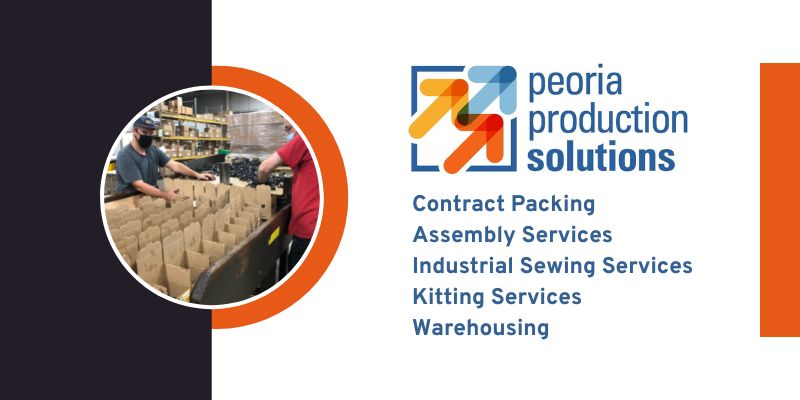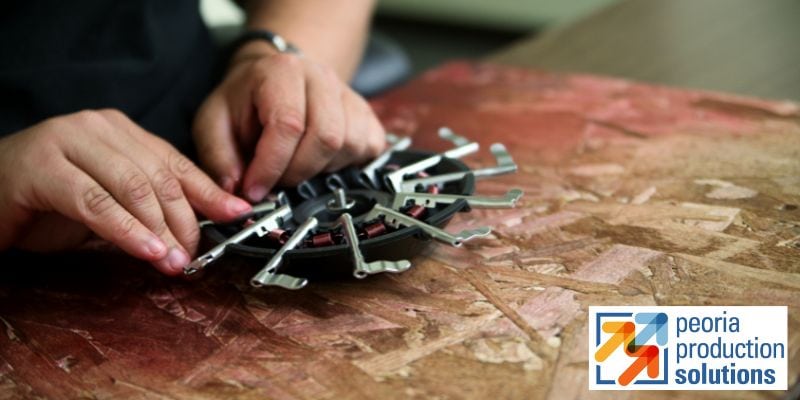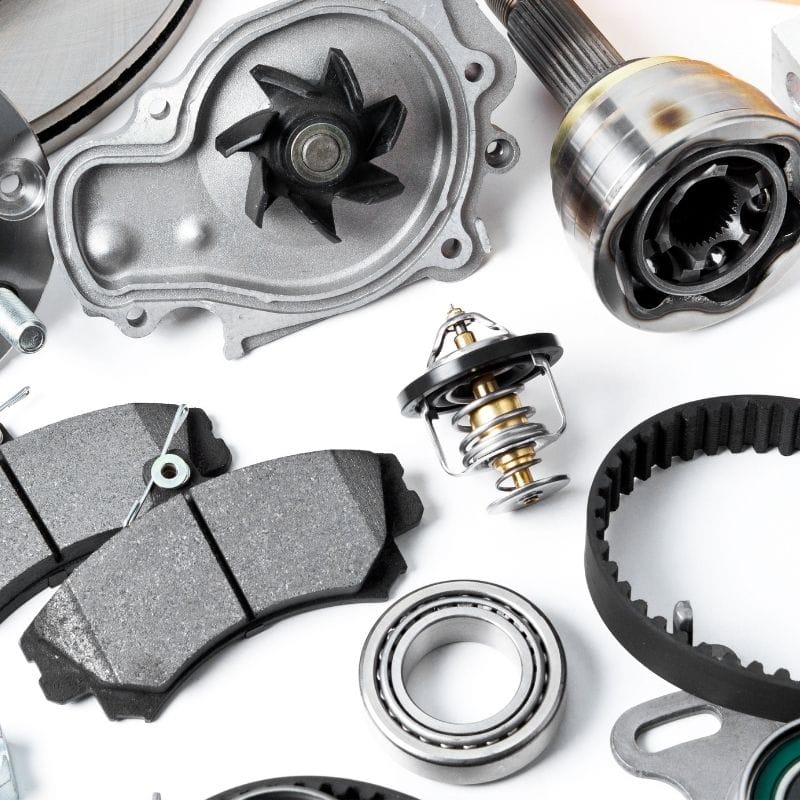Secondary Packaging Types & Uses
Leave a Comment
Examples of Secondary Packaging
Some examples of secondary packaging would be a cereal box with nutritional facts, marketing information, and brand awareness, such as company logos. The bag inside the cereal box that actually holds the cereal would be the primary packaging. Another example of secondary packaging would be a 12-pack of soda in an easy-carry cardboard container, with the actual aluminum can that holds the beverage being the primary packaging.
These are just a few examples of secondary packaging used in the food and beverage industry, although secondary packaging is used in almost every industry for a variety of products and displays, such as gift sets, cosmetics, household items, and more.
Secondary Packaging Material
Secondary packaging material includes many forms depending on the company and product needs. The type of secondary packaging material chosen should provide the best protection for the products during transportation and distribution procedures.
Some of the most common types of packaging material include cardboard boxes and shrinkwrap material, although there is a wide variety of high-quality secondary packaging options that can really set a product apart from the competition. Working with an experienced secondary packaging provider can help you understand the many choices available to provide the most value.
Quality secondary packaging protects the products inside, includes all pertinent information regarding product contents and safety, and goes one step further to promote brand awareness that entices the customer to purchase. The many types of secondary packaging used by the most well-known companies include:
- Point-of-Purchase (POP) Displays – designed to increase brand awareness in a variety of forms, such as club packs and packaging for a positive consumer experience.
- Club packs – club stores like Costco, Sam’s Club, and Walmart display products in club packaging that must meet specific visibility requirements.
- Clamshell packaging – one-piece containers made of various materials like foam, cardboard, or plastic that open and close on a hinge.
- Cello wrapping – tightly wrapped a product with a thin layer of biodegradable cellophane that is often heat sealed to provide a protective closure without any loose ends.
- Gift set packaging – this type of secondary packaging can include a variety of materials and designs, with custom packaging, inner boxes, labeling, cello wrap and more.
- Flexible packaging – flex packaging is becoming more popular with bag and pouch filling for less wasted space and product protection.
- Kit assembly – kitting is a popular type of secondary packaging that offers consumers a group of similar products or items that are typically used together, such as many household items, hardware, food and beverages, cosmetics, crafts, and more.
- Variety pack packaging – variety packs are also popular and give companies a technique to introduce customers to new items or showcase featured items with multiple items in a variety pack.
PPS Offers Secondary Packaging Solutions
Peoria Production Solutions, PPS, is a leading contract packaging company offering secondary packaging solutions to a variety of businesses and industries. We offer more than 80 years of experience in providing exceptional production solutions, including packaging, repackaging, order fulfillment, kitting and assembly, palletizing, and more. PPS differs from other packaging providers without responsiveness to customer needs and our unique ability to customize solutions as a fully sustainable, not-for-profit organization.
PPS utilizes a highly skilled and trained staff, automated equipment, and strict quality policies to provide best-in-class secondary packaging solutions. We offer experience with all types of secondary packaging materials and processes. Contact us to learn how to improve your packaging process with an experienced secondary packaging provider.
How to Organize Pallets of Product Crowding Your Facility
Leave a Comment
Here are some tips to organize the many pallets of product crowding your facility.
- Unpack shipments quickly – when receiving pallets full of boxes or cartons stacked upon each other, it is best to unpack shipments quickly. Unpacking pallets quickly allows for immediate inspection of incoming material and for accurate inventory counts when adding materials directly to stock upon receipt. Shipments that are left to sit in a warehouse become a serious quality issue and may contain substandard products and be left unaccounted for until receiving procedures are performed.
- Follow meticulous receiving procedures – every business should have written work instructions for receiving procedures which include checking products for quality issues, checking paperwork such as packing slips against the purchase order and performing in-house procedures to add these products to inventory. Automated inventory systems allow for label printing and scanning on the spot at receiving stations to quickly add material to inventory.
- Keep inventory categorized and organized – following strict work processes for inventory management is critical for companies to know exactly what raw materials and finished goods are on hand. Inventory should be organized to follow each facility’s accounting method, such as First-in-First-out (FIFO), or Last-in-First-out (LIFO), or other established methods. Inventory should be easy to locate, easy to verify, and easy to access and load for transportation to the next destination. Whether storing raw materials to take to your production floor or storing finished goods ready for shipment to customers, every business must know exactly what is on hand at any given moment to ensure no disruptions with production and order fulfillment requirements.
- Consider color-coded stretch film – most pallets are secured with stretch wrapping film, typically clear in color. Stretch film is available and other colors as well, and can be a helpful tool to quickly identify pallets of product in one category versus those in another. Working with an experienced packaging and palletizing company can help you to understand your options for organizing pallets of product.
- Create and follow a streamlined floor plan – every company should have a system for an efficient and streamlined floor plan. Loading docks should be dedicated to either just receiving or just shipping when possible, and any backtracking of products should be eliminated whenever feasible. Ideally, incoming materials are received in one area, and all receiving procedures are followed to move products to their correct locations. Raw materials should then be moved straight to required production areas, where they are processed and transported to the next area, such as quality inspection, packaging, and shipping, without backtracking across any prior floor space. This is the most efficient flow of goods that helps to improve productivity and prevent contamination.
Speak with a contract packaging and palletizing company for more information on how you can improve the efficiency and organization in your facility.
PPS Offers Packaging and Palletizing Solutions
Peoria Production Solutions, PPS, offers secondary packaging and palletizing solutions to businesses of all sizes in a wide range of industries. We have been providing production solutions such as packaging, wrapping, kitting, assembly, palletizing, and more for more than 80 years. As an ISO9001:2015 registered company, we follow strict quality policies to provide added assurance to our customers. We customize your production solutions to meet your needs, such as packaging, palletizing, storing, and shipping per specific customer requirements.
PPS specializes in providing value-added secondary services that improve your productivity and help companies meet production and order fulfillment goals. We utilize automated equipment in our state-of-the-art facility, with 17 shipping and receiving bays and ample capacity to ensure a strictly controlled flow of goods. Contact us with any questions and to learn more about how we can improve the efficiency and organization of your facility with our packaging and palletizing services.
NPR Article Discusses PPS and Rivian Working Together for Assembly
Leave a Comment
Peoria Production Solutions recently had an NPR article written about the company regarding its work with Rivian, the electric automaker that produces in Normal, Illinois. Rivian outsourced with PPS to meet their assembly and manufacturing needs on their electric delivery vans.
What Is Kitting for Manufacturers?
Leave a Comment
This article was originally published on April 6, 2021 and updated on 3/28/2023
Kitting is a process that involves grouping together individual products that are either sold together or used together into one assembled kit.
What is Kitting?
Kitting is an inventory management technique that is often used by retailers, especially e-commerce and online marketplace companies. Kitting can also be used in manufacturing and provides many benefits to workers and companies with streamlined operations.
Kitting involves taking multiple products with individual SKU numbers and combining them into one kit, which creates only one new SKU for the assembled kit. This can drastically improve productivity within a company as the need to scan several different items is eliminated and all information is contained in one kit with one SKU.
Kitting in Warehouses
Kitting provides many benefits for warehouse operations and can be performed in-house with employees performing manual labor or can be outsourced to a kitting provider. Oftentimes, outsourcing to a kitting service provider provides greater benefits and frees up internal resources. Kitting in warehouses helps to streamline picking, packing, and shipping operations with similar items packed and sold together and stored in one kit with one SKU. Kitting performed for warehouse, e-commerce, or 3PL operations allows companies to quickly ship kitted items immediately upon order without the need to create kits prior to sale.
Kitting in Manufacturing
Kitting is also popular in many manufacturing applications, particularly processes where workers need to assemble specific products as part of their work process. Workers that need specific tools to do their job, or require a variety of components to assemble as part of an assembly line process or work process, benefit by having all needed items readily available in a convenient kit. Kitting in manufacturing significantly helps to improve productivity and can benefit many companies with limited floor space by eliminating the need to store many individual items.
Kitting comes in handy when producing customized products, such as the assembly of machinery and equipment or appliances, for example, that contain different colors or different features. Each kit could have the necessary components delivered to the right workstation at the right time. Kitting helps to optimize employee time for maximum efficiency and improve order fulfillment and efficient production processes.
Contract Kitting Providers Offer Many Advantages
One of the greatest advantages of working with a contract kitting provider, instead of performing kitting in-house, whether a retailer or manufacturer, is the ability to focus on your niche activity instead of dedicating resources to kitting. A contract kitting provider has experience in the kitting process to provide high-quality kitting and assembly and to meet delivery schedules.
Peoria Production Solutions, PPS, provides contract kitting services to all types of businesses in a variety of industries. We offer secondary production solutions such as kitting and assembly, including electronic kit assembly and kitting of many types of products and items. PPS has been providing kitting and assembly as well as secondary packaging and many other production solutions to help companies meet their productivity goals and delivery schedules for more than 80 years.
PPS is an ISO9001:2015 registered kitting and assembly provider, following strict quality policies practiced throughout the organization with top-down management involvement. We invest in our staff with training, cross-training, and employee appreciation programs to recognize our skilled workforce who provide exceptional services with meticulous attention to detail.
PPS is a fully self-sustaining, not-for-profit organization committed to our customers and our staff. We utilize automated equipment in our state-of-the-art facility with more than 17 shipping and receiving bays and a streamlined flow of goods to ensure full accountability of customer-supplied material. Contact us to learn more about our kitting and assembly services and how we can help to improve your warehouse or manufacturing operation with high-quality contract kitting.
Supply Chain Optimization: Kitting Solutions
Leave a Comment
This article was originally published on April 12, 2021 but updated on March 27,2023
Companies in every industry take great care to source all products and services from reliable providers to optimize their supply chain for maximum value. Manufacturers in many industries, such as automotive or electronics, want to make sure their suppliers follow generally accepted quality standards such as ISO9001:2015 standards for added assurances in providing quality, timely products and materials. Suppliers are often evaluated by their customers to ensure that they would meet their requirements and add value to their supply chain.
Companies that produce kits as part of their process, whether they are a distribution center, a third-party logistics (3PL) provider, manufacturer, or retailer, can experience many benefits by partnering with a contract kitting provider.
What is Kitting?
Kitting is the process of combining multiple individual products into one assembled kit. Kitting takes individual items with individual SKU numbers and combines them into one kit with one SKU. This is especially convenient when multiple products are often purchased together.
Retailers kit products to appeal to consumers with a convenient kit of all needed items such as first-aid kits, for example, or cosmetics, tools and hardware, books, crafts, and a variety of other items. E-commerce and distribution centers use kitting to group similar items together for consumer convenience as well as improved inventory management. Manufacturers often use kits during their production process when workers need multiple items together on the assembly line or to take individual items and put them together as part of a larger assembly.
How Kitting Contributes to Supply Chain Optimization
Kitting provides many benefits to companies in various industries, providing value-added services that improve a company’s supply chain. Some ways in which kitting adds value to any supply chain include:
- Vendor consolidation – many companies aim to consolidate vendors to focus on working with suppliers that meet their quality and delivery standards. Companies that outsource kitting to one kitting provider send all components, usually in bulk, and receive back completed kits of numerous items from one provider.
- Improves order fulfillment time – companies that receive the kits to put on a shelf or salvia e-commerce to consumers can improve order fulfillment processes. By receiving completed kits from a kitting provider, companies can fill orders quicker.
- Improves order and inventory accuracy – kits that have already been assembled and inspected and have received a quality stamp of approval provide assurances that all individual products contained in the kit are correct and meet quality standards. This saves a lot of time for companies that do not have to individually inspect and assemble parts into a kit prior to shipping or sale. They are already completed, inspected, and accurate.
- Improves record-keeping time and accuracy – when companies receive kits of assembled products, they scan in one SKU, which contains all of the details needed for every item in the kit. Scanning one product in and out of inventory and working with one vendor to supply each kit significantly improves record-keeping time and accuracy.
- Companies may experience increased sales – many companies offer kits to consumers in the hopes of selling more products at once instead of selling items individually. Enticing a customer to purchase a fully assembled kit can boost sales while appealing to consumers with like items that can be sold together.
Working with an experienced kitting provider is the best way to achieve maximum value and optimize your supply chain.
PPS Adds Value to Many Supply Chains with Quality Kitting Services
Peoria Production Solutions, PPS, understands the importance of adding value to our supply chains with more than 80 years of experience in providing high-quality production solutions. We provide many secondary operations to improve the productivity of companies of all sizes, including some of the largest Fortune 100 companies in the country. We offer kitting and assembly, electronic component kitting, and all types of secondary packaging solutions customized to meet our customer’s needs.
PPS is an ISO9001:2015 registered supplier, committed to high-quality secondary production solutions by following strict quality policies with a fully trained and attentive staff. We provide extensive training, cross training, and perform many lean practices, such as value stream mapping (VSM) to ensure the most efficient and quality processes are provided. Contact us to learn how you can optimize your supply chain with quality and experienced kitting and assembly services.
Why Kitting Processes Matter to Many Industries
Leave a Comment
This article was originally published on April 19, 2021 and updated on March 23, 2023
The definition of kitting is to gather a set of products that somehow relate to each other or go together into a kit, or a collection. Kitting combines individual items with individual SKUs into one kit with one SKU, which provides many benefits and drastically streamlines operations.
Kitting is a process performed in many industries that provides a host of advantages to employees, companies, and consumers.
The Kitting Process
Contract kitting providers perform kitting services to many types of companies with a variety of products and items. Regardless of the type of kitting performed, each process shares core similarities. Generally, the kitting process includes:
- Receipt or collection of individual items – the kitting provider receives individual items, usually in bulk packaging for kitting and assembly
- Assembly of all products – the actual assembly of each kit is performed, usually with manual labor
- Quality inspection procedures should be performed during assembly -each kitting assembly process should have a specific work instruction and critical areas for inspection noted
- Packaging – this includes creating one new label for the kit, with one SKU(in an automated system, this removes all individual products from inventory and puts them all into one completed kit)
- Shipping – each kit is then repackaged for shipping to the customer or end-user
Benefits of the Kitting Process
Kitting provides a host of benefits to many companies in a variety of industries. Kitting performed for warehouse and distribution operations allow these companies to streamline operations, receiving fully assembled kits of products they can turn around and ship to their customers or place on a shelf.
Kitting in manufacturing provides operators with the correct components or tools needed at the proper workstation when and where they are required. This saves employees a lot of time and wasted steps to gather various items, and keeps assembly and production lines moving.
Kitting alleviates bottlenecks in many types of industries and streamlines operations for improved productivity. Utilizing a contract kitting and assembly provider can eliminate a lot of in-house labor, allowing companies to focus on their niche manufacturing. Improved productivity enhances the manufacturing process and improves profitability.
High Quality and Efficient Kitting and Assembly Services
Peoria Production Solutions, PPS, has been providing high-quality and efficient kitting and assembly services for more than 80 years. As an ISO9001:2015 registered kitting provider, we provide a level of assurance to all customers of receiving quality kitted products with on-time delivery. PPS offers experience in kitting for a wide range of industries, such as
- Kitting for subscription fulfillment operations
- Creating toolkits including seals, sockets, and other tools safety and first-aid kits
- Kitting of promotional materials
- Human resource and onboarding welcome kits
- Kitting, packaging, and palletizing for the beverage industry
PPS offers experience in kitting these types of products for these industries and many others. Our modern, state-of-the-art facility includes an expansive 130,000 square-foot facility with 17 shipping and receiving bays. This allows for streamlined operations and the capacity to dedicate kitting and assembly stations for improved quality control. Our Enterprise Resource Planning (ERP) system automates all incoming and outgoing materials with lot code traceability and real-time inventory management.
PPS is a leading contract kitting and assembly provider with more than 80 years of experience, the capacity, and resources to fulfill your production needs. We differ from other kitting providers in our not-for-profit status and responsiveness to our customer’s needs. Contact us with any questions and to learn more about how kitting processes can help streamline your operations.
Does Product Kitting Reduce Dock-to-Stock Cycle Time?
Leave a Comment
This article was originally published on April 26, 2021 and updated on 3/21.
Dock to stock (DTS) is a term used to describe the time needed to move products from receiving to storage, whether items are going directly to inventory on shelves, racks, bins, or pallets. Receiving for small companies can be a straightforward process, although for large businesses receiving large volumes of product, Dock to Stock can be extremely time-consuming and wasteful if processes are not optimized for maximum efficiency.
Kitting is one way that Dock to Stock time can be significantly improved, and it provides a number of benefits that can improve productivity and profitability.
What Is Dock to Stock?
Dock-to-stock begins when ordered materials arrive at the loading dock and is the beginning of the receiving process. Receiving involves a lot more than just grabbing boxes and putting them on a shelf. Proper receiving procedures can be time-consuming and include:
- Checking the products received to ensure they were not damaged in transit
- Checking the items and quantity received against the internal purchase order to make sure you got what you ordered
- Creating a computerized label to stick on the box to scan these items into a computerized inventory system
- For companies without computerized systems, handwritten logs must be kept of all be further assembled or used in specific production runs can spend all day receiving and moving items from dock to stock. Optimizing this method with the most streamlined and efficient processes provides many benefits for workers and for improving company metrics.
How Kitting Improves Dock to Stock
Imagine a company receiving 10 boxes of different items, packed in bulk, that must then be further assembled in-house as part of their internal fulfillment or production requirements. Now imagine receiving 10 boxes of already individually packed kits, one kit containing the correct amount of each item already packaged and ready to stock directly to inventory, put on a display shelf, or moved right to a production and assembly station with everything required included and ready to go.
Some of the benefits that kitting provides to dock stock include:
- Improves DTS time: Receiving kitted products eliminates several steps for manufacturers and fulfillment centers and drastically improves dock-to-stock time.
- Streamlines the receiving process: Kitted products combine all the SKUs of the individual items into one SKU, saving a lot of time without scanning numerous individual items into inventory. This drastically improves the storage and distribution of products kitted in advance.
- Faster assembly – kitted products destined for assembly improve internal procedures with employees having everything they need delivered in one kit, eliminating the need to search for numerous products. Kitting makes it simpler to locate what is needed for an order, boosting the efficiency and productivity of the processes. Kitting products allows for a much faster fulfillment process, which ultimately reduces shipping delays that could happen if the items were packaged individually.
- Fewer movements – streamlined and quick processes support fewer movements for employees, as they do not have to walk back and forth together required items. Tracking movements is a big part of streamlining processes, and even seconds add up. Companies that perform Value Stream Mapping (VSM) exercises begin to realize many advantages when breaking all processes down into seconds and eliminating all waste, including unnecessary movements, downtime, backtracking, bottlenecks, or duplicate work.
- Improved quality with fewer mistakes – kitting reduces chances of error by eliminating further assembly processes. Receiving kits from an ISO-registered contract kitting provider provides even greater assurance of receiving quality and accurate kits.
All of these benefits of kitting can be translated into cost savings and an overall more efficient Dock-to-Stock cycle time. Kitting allows for a “grab and go” process that is much quicker than individually searching for parts.
Cost-Efficient Kitting and Assembly Services
Peoria Production Solutions, PPS, is a leading provider of contract kitting services, offering more than 80 years of experience in delivering cost-efficient production solutions to companies of all sizes. We follow strict quality policies as part of our ISO9001:2015 registration, delivering quality kits and assembled components on time. Our Enterprise Resource Planning (ERP) system provides complete lot code traceability for full accountability of all customer-supplied material.
PPS differs from other contract kitting companies as a fully sustaining, not-for-profit organization. We offer vast resources, including a large state-of-the-art facility with the capacity to set up dedicated kitting and assembly lines with a highly trained and dedicated staff. Contact us to learn more about our kitting and assembly services and how kitting can improve your Dock to Stock time and provide these many benefits.

